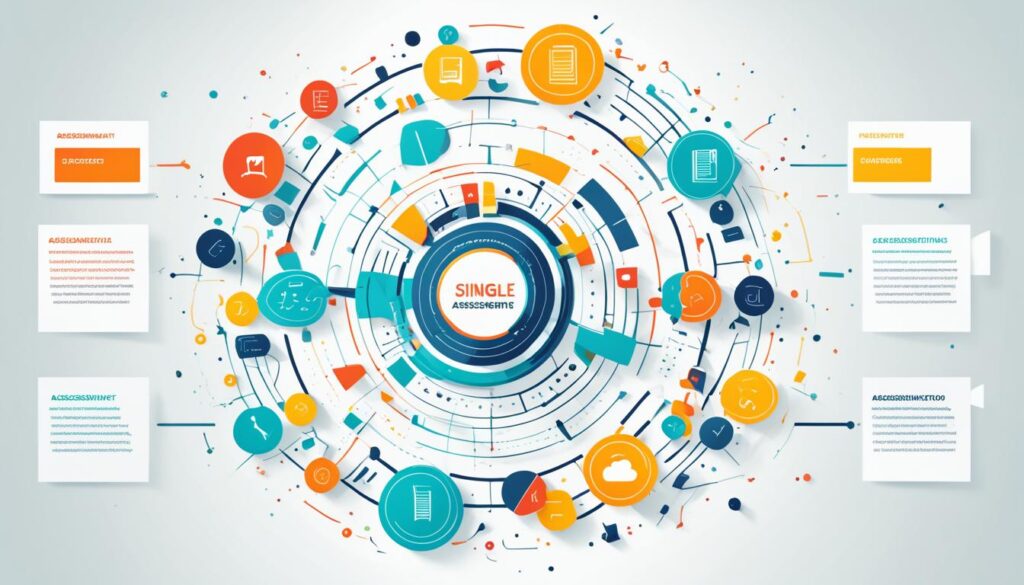Commercial litigation can be a complex and challenging process for businesses. It is essential for business owners and legal professionals to have a comprehensive understanding of the strategies and best practices for managing business disputes. This guide will provide valuable insights and practical tips to effectively navigate commercial litigation and resolve disputes in a legal setting.
As a business owner, you may find yourself facing various legal issues, such as contract disputes, intellectual property infringement, or employment disagreements. Understanding the intricacies of commercial litigation is crucial to protect your business interests and minimize potential risks.
By familiarizing yourself with the legal landscape, you can make informed decisions and develop effective strategies to handle disputes. Whether you are contemplating litigation, defending against a lawsuit, or seeking alternative dispute resolution methods, this comprehensive guide will equip you with the knowledge and tools necessary to navigate the complexities of commercial litigation.
Key Takeaways:
- Commercial litigation can be complex and challenging for businesses.
- A comprehensive understanding of managing business disputes is essential.
- This guide provides valuable insights and practical tips for navigating commercial litigation.
- Business owners can protect their interests and minimize risks by understanding the legal landscape.
- Developing effective strategies and considering alternative dispute resolution methods are crucial in commercial litigation.
Understanding the New Single Assessment Framework by CQC
The Care Quality Commission (CQC) has introduced a new Single Assessment Framework for all CQC-regulated providers in England. This framework aims to streamline the assessment process, ensuring consistency and promoting a higher standard of care across the board. By replacing the previous Key Lines of Enquiry (KLOEs), the Single Assessment Framework brings in 34 new Quality Statements and 6 Evidence Categories, providing a more comprehensive approach to inspections.
As a CQC-regulated provider, it is crucial to understand the specific guidance and inspection details related to your sector in order to effectively prepare for assessments and provide the necessary evidence. The guidance from CQC emphasizes the importance of collecting data in six general categories:
- People’s experience
- Staff feedback
- Observation
- Processes
- Outcomes
Collecting data in these categories will contribute to the overall rating of your service, as it helps determine the quality of care provided. It is essential to familiarize yourself with the details of the Single Assessment Framework, as it outlines the expectations and requirements for compliance with CQC standards.
“The Single Assessment Framework marks a significant shift in how CQC regulates providers. It provides a more holistic approach to inspections and focuses on outcomes and person-centered care. Providers should take the time to thoroughly understand the framework and incorporate the necessary processes to meet the standards set by CQC.”
By understanding and implementing the requirements outlined in the Single Assessment Framework, providers can ensure compliance, improve the quality of care, and ultimately enhance the overall experience for service users. It is important to stay up to date with any updates or revisions to the framework, as CQC continuously works to refine and improve the inspection process.

The Role and Strategies of Personal Injury Lawyers
Personal injury lawyers play a crucial role in the legal system, advocating for individuals who have been injured due to the negligence or misconduct of others. These lawyers specialize in assessing the merit of personal injury cases, calculating damages, and navigating the complexities of the legal process to ensure their clients receive fair compensation.
When evaluating the strength of a personal injury case, lawyers carefully analyze various factors such as the severity of injuries, medical expenses, lost wages, and the impact on the victim’s quality of life. This comprehensive assessment helps determine the potential damages that can be pursued on behalf of their clients.
The Assessment Process and Establishing Liability
To assess the merit of a personal injury case, lawyers conduct a thorough investigation to establish liability. This involves gathering evidence, interviewing witnesses, reviewing medical records, and consulting with relevant experts. By carefully analyzing the facts and circumstances surrounding the incident, personal injury lawyers identify key factors that support their clients’ claims.
Establishing negligence is a crucial aspect of personal injury cases. Lawyers use their legal expertise to demonstrate that the defendant had a duty of care, breached that duty, and caused harm to the plaintiff. This requires comprehensive documentation and persuasive arguments to present a strong case on behalf of the injured party.
Recovering Damages and Negotiating with Insurance Companies
Personal injury lawyers skillfully negotiate with insurance companies to ensure their clients receive fair compensation. They meticulously evaluate the extent of damages suffered by their clients, such as medical expenses, loss of income, pain and suffering, emotional distress, and future medical needs. Armed with this information, personal injury lawyers engage in negotiations or pursue litigation to hold the responsible party accountable.
By leveraging their legal expertise and knowledge of personal injury laws, these lawyers effectively advocate for their clients, striving to secure the compensation they deserve. Their goal is to alleviate the financial burdens faced by victims and help them rebuild their lives.
Alternative Dispute Resolution and Trial Preparation
While personal injury cases often settle through negotiations or alternative dispute resolution methods, lawyers must thoroughly prepare for trial if necessary. They ensure their clients are aware of their rights, explain the legal process, and guide them through each step. By meticulously gathering evidence, identifying expert witnesses, and developing persuasive arguments, personal injury lawyers are prepared to present a compelling case in court.
“It is our duty as personal injury lawyers to provide compassionate and diligent representation to those who have suffered harm. We strive to maximize our clients’ compensation and achieve justice on their behalf.”
– John Stevens, Personal Injury Attorney
In conclusion, personal injury lawyers play a pivotal role in helping individuals seek justice and recover damages for their injuries. Through a comprehensive assessment of cases, strategic negotiation with insurance companies, and diligent trial preparation, these lawyers work tirelessly to ensure their clients receive the compensation they deserve. Their commitment to justice and advocacy is essential in the pursuit of personal injury claims.

Leveraging Affirmative Recovery Programs for Business Success
Affirmative recovery programs are formal efforts by legal departments to reduce costs and enhance liquidity for the business through the pursuit of recoveries, including plaintiff-side litigation. These programs empower legal departments to generate value for the company and shift from being cost centers to value drivers.
While many companies already have affirmative recovery programs in place, there is still untapped potential for improvement. This is where legal finance comes into play as a valuable tool for companies embarking on affirmative recovery programs. Legal finance helps mitigate costs and risks associated with litigation, which can be significant barriers for businesses.
By partnering with legal finance providers, companies can shift upfront costs, eliminate the risk of loss, and exercise control over the timing of cash flows associated with recoveries. This approach allows legal departments to contribute to the bottom line without adding to expenses and create immediate liquidity in advance of litigation outcomes.
FAQ
What is commercial litigation?
Commercial litigation refers to legal disputes that arise between businesses or business entities. These disputes can involve a variety of issues, such as contract disputes, intellectual property disputes, shareholder disputes, and more. Commercial litigation can be complex and challenging, requiring businesses to navigate the legal process to resolve the dispute.
How can I effectively manage and resolve business disputes in a legal setting?
To effectively manage and resolve business disputes in a legal setting, it is important to have a comprehensive understanding of commercial litigation strategies and best practices. This may involve engaging the services of experienced legal professionals who specialize in commercial litigation, conducting thorough research and analysis of applicable laws and regulations, and developing a strategic approach to the case. It is also crucial to effectively communicate and negotiate with the opposing party to seek a resolution, and if necessary, be prepared to litigate the dispute in court.
What is the new Single Assessment Framework introduced by the CQC?
The Single Assessment Framework is a new system introduced by the Care Quality Commission (CQC) in England. It replaces the previous Key Lines of Enquiry (KLOEs) and includes 34 new Quality Statements and 6 Evidence Categories. This framework aims to standardize the assessment process for all CQC-regulated providers and ensure a consistent approach to inspections. Providers must familiarize themselves with the specific guidance and inspection details related to their sector to effectively prepare for assessments and provide the necessary evidence.
What are the six general categories in the CQC’s Single Assessment Framework?
The six general categories in the CQC’s Single Assessment Framework are people’s experience, staff feedback, observation, processes, and outcomes. Providers are required to collect data and evidence in these categories to demonstrate the quality of their services. The information collected will be used by the CQC to determine the rating of a service during inspections. It is crucial for providers to understand and comply with the guidance provided by the CQC in order to prepare for upcoming inspections and ensure compliance.
What is the role of personal injury lawyers?
Personal injury lawyers play a crucial role in representing individuals who have suffered injuries due to the negligence of others. They evaluate the merits of injury cases, establish liability or fault, and calculate the damages that the injured party may be entitled to receive. Personal injury lawyers utilize their legal expertise to negotiate with insurance companies on behalf of their clients, prepare for trial if necessary, and explore alternative dispute resolution methods. Their goal is to secure fair compensation for their clients and ensure that justice is served.
How are damages calculated in personal injury cases?
Damages in personal injury cases are calculated by considering various factors, including the severity of the injuries, medical expenses incurred by the injured party, lost wages or income as a result of the injuries, and the impact of the injuries on the victim’s quality of life. The calculation of damages aims to compensate the injured party for their losses and provide financial support for their recovery and rehabilitation. Personal injury lawyers work closely with their clients to gather relevant evidence and documentation to accurately calculate the damages and seek the appropriate compensation.
What are affirmative recovery programs?
Affirmative recovery programs are formal efforts by legal departments to reduce costs and enhance liquidity for businesses through the pursuit of recoveries, including plaintiff-side litigation. These programs empower legal departments to generate value for the company and shift from being cost centers to value drivers. By working with legal finance providers, companies can mitigate costs and risks associated with litigation, shift upfront costs, eliminate the risk of loss, and control the timing of cash flows associated with recoveries. This approach allows legal departments to contribute to the bottom line and create immediate liquidity in advance of litigation outcomes.
How can legal finance help in leveraging affirmative recovery programs?
Legal finance can be a valuable tool for companies embarking on affirmative recovery programs. By working with legal finance providers, companies can mitigate the costs and risks associated with litigation. Legal finance allows companies to shift upfront costs and eliminate the risk of loss by providing funding for legal expenses. It also helps companies control the timing of cash flows associated with recoveries, providing immediate liquidity in advance of litigation outcomes. This allows legal departments to contribute to the bottom line without adding to expenses and enhances the overall success of affirmative recovery programs.